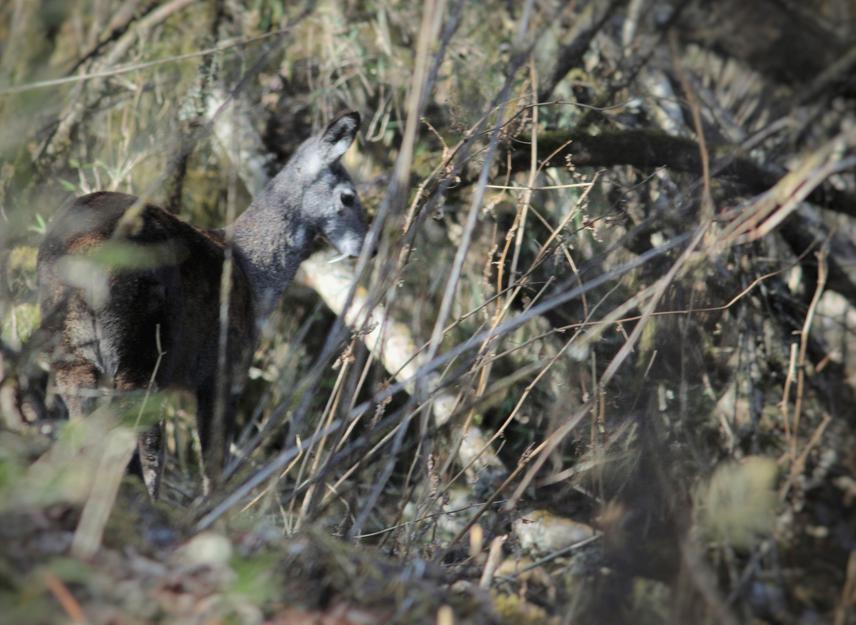Indra Prasad Acharja
Estimation of musk deer population, habitat structure and extent of poaching activities in Wangchuck Centennial National Park (WCNP) and extend strategies to combat them.

Musk deer feeding.
Himalayan Musk deer is one of the least understood but protected species under schedule I of Forest and Nature Conservation Rules of Bhutan (FNCR) 2006, Appendix I of CITES, and endangered under IUCN red list. Knowledge of their habitat ecology and distribution is incomplete and population is declining rapidly. No detail study has been done in WCNP, where large numbers of nomadic herders inhabit within the habitat of the species and frequency of poaching activities is high.
Considering this dearth, this study aims to understand the habitat use and effect of anthropogenic pressure on it in this area. It would also help to understand the sensitivity of such crepuscular species to human interference. It is ascertained that population of musk deer are declining at alarming rate and their survival in near future is at stake. Study would also help in understanding some of the pertinent causes of its decline and frame conservation approaches for future.
Study will be carried out integrating sign survey (Dung count), line transect sampling and questionnaire survey with nomadic community and field staff for understanding distribution, habitat use, frequency and extent of interaction, probable poaching sites and frequencies of past and present poaching activities in the area.
On successful completion of project following outcomes are expected:
1- Determine probable poaching sites, frequencies of past and present poaching activities in the study area,
2- Understand in depth and determine the population status of musk deer,
3- Understand present habitat structure and its preferences and
4- Outline and identify major threats to musk deer population and their habitats in the study area and strategies to combat them.